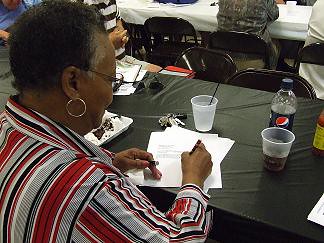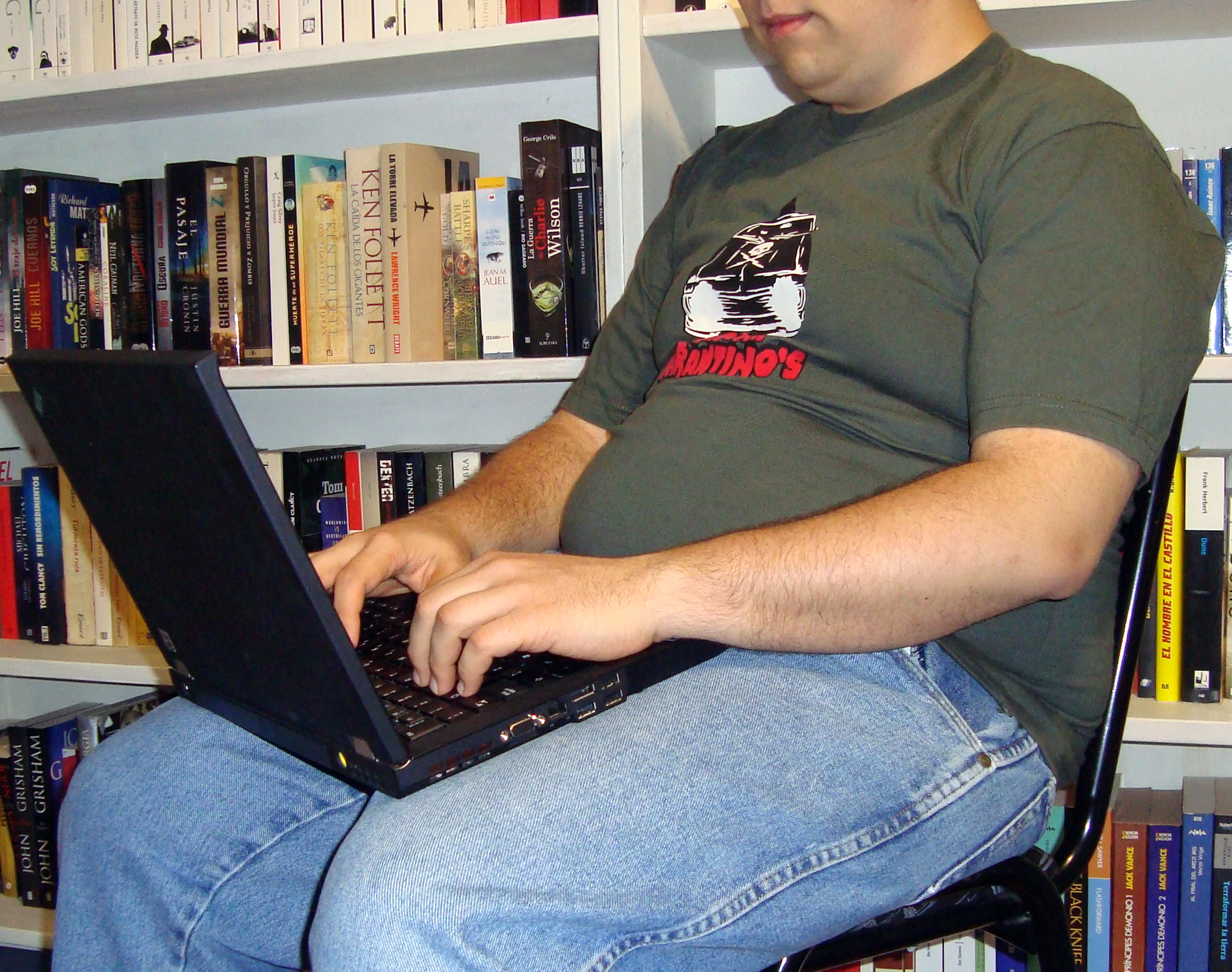What exactly is that focused, productive, highly satisfying state called “flow”? And discover great tips for staying there.
The first time I experienced flow occurred during my high school geometry final exam. I’d never been a math person, but something about the tangible shapes, lines and corners made sense to me. I remember steadily writing the formulas, finishing problem after problem, flipping the page to start the next set, and repeating. The test was challenging, but I felt confident. I recall a strong feeling of physical comfort even though I was wedged in a bare-bones student desk surrounded by dozens of nervous teens. I didn’t so much as glance at the cage-enclosed classroom clock. When I completed the test, I patted it in satisfaction, something that, as an aspiring writer, I would never have imagined doing.
More recently, I woke up in the middle of the night with an idea for an essay. Instead of waiting until daylight, I sat in my darkened living room for two hours tapping it out on my laptop. I did not feel tired, and I did not worry how I was going to deal with my kids’ morning madness on so little sleep.
Taking that test and writing that essay felt good.
And that good feeling is called flow. If you’ve ever been so absorbed in an activity that you lost all sense of time, you’ve probably experienced flow, too. If you’ve ever stood up from your chair after working on something (whether it was a painting, a legal brief, a sales report or a math test) and realized suddenly that you haven’t eaten in hours, you were likely in flow. And if you’ve ever felt a physically satisfying feeling of accomplishment after a project or activity, yep, you were in flow.
Basically flow is the scientifically researched theory behind the lay expressions “in the zone” or “getting in the groove.” During flow, your attention is focused and held without effort. And it’s found in “those moments of total absorption, when we’re so sucked in by the task at hand that time seems to either slow down or speed up,” explains Steven Kotler, author of The Rise of Superman: Decoding the Science of Ultimate Human Performance and co-founder of the Flow Genome Project, a for-profit organization based in Austin, Texas, that aims to help organizations and individuals achieve flow more often. (He calls it “flow hacking.”)
Coined in 1975 by Mihaly Csikszentmihalyi (pronounced “cheeks sent me high”), Ph.D., the term and concept of flow have become a core element of Positive Psychology; Csikszentmihalyi believes that flow is a key component of a satisfying, happy life. His book Flow: The Psychology of Optimal Experience has become a seminal work in the new science of happiness. “Flow makes life much better,” the author told SUCCESS. “You don’t feel like you’re working against the current, but with it. Work doesn’t seem like an obligation, and you get better at what you’re doing.”
The management consulting firm McKinsey & Co. interviewed more than 5,000 executives over 10 years about their moments of flow at the office. The executives reported that they felt five times more productive when they are in flow. Kotler’s not surprised. “Flow is an optimal state of consciousness where we feel and perform our best,” he says. In this way, we can think of flow as an evolutionary encouragement—and reward—for getting stuff done.
This possibility for optimal productivity is one way that flow differs from other feel-good states of consciousness such as meditation and daydreaming, for which it is often confused. While meditation seeks to empty the mind, flow focuses it on the task at hand. And while daydreaming can be seen as “zoning out,” flow is zoning—or zeroing—in. We like the way David Shernoff, Ph.D., puts it (he’s a psychologist who studies flow in education and the author of Optimal Learning Environments to Promote Student Engagement): “Flow is playful work or serious play.”
Helping people understand, find and engage longer in playful work or serious play is one of the tools positive psychologists use to help their patients focus on their strengths rather than their perceived negatives. According to Csikszentmihalyi, a lucky 12 percent of people say they experience flow several times a day. At least an equal number of people say they never get in the flow. But the overwhelming majority report “flow”-ing a few times a month. If you’ve never felt flow, or would like to more often, keep reading.
Engage in autotelic activities.
The adjective “autotelic” is used to describe any activity or creative work that has an end or purpose in itself. That is, you do the activity for the experience of doing it, not because you are trying to reach a separate goal. You would participate in it whether you had to or not. “Dancing, singing, tennis… these are the types of activities that lend themselves more easily to flow,” Csikszentmihalyi says. Why? Because they allow you to be completely present (you have to listen to the music and follow the beat; you react to your opponent’s serve) while also completely immersed. It’s rare to think about what you’ll make for dinner when you’re rushing the net. And unless you’re a professional dancer, you don’t calculate how much money you’re making when you’re tearing up your living-room rug to “Blister in the Sun.” The more you get in the flow and are conscious of how it feels, the easier it will be to slip into it when you’re involved in more goal-oriented activities. “You start noticing when you’re in flow and you can work on deepening the state,” Kotler says.
Get your challenge/skill ratio right.
Imagine a graph with challenge level on the left side and your perceived skill level along the bottom. In the lower left corner, the challenge is low, but so are your skills, a combination that creates apathy, according to Csikszentmihalyi (think mopping your floor). When the challenge is low, but your skill set is high, you feel relaxed (cooking your favorite meal, perhaps?). Conversely, if the challenge is high and your skills low, you will probably be worried and anxious (you’re a shy person who has to do a sales pitch). But if the challenge is high and so are your skills, ahh, that’s the sweet spot—up in the top right corner of the graph—where flow happens. But it’s a moving target: As your skills sharpen, the challenge must rise to the occasion, lest you fall into apathy or boredom. And as the challenge increases, your skills have to step up. What allowed for flow two years ago—putting a budget report together, say—won’t necessarily work today, as your experience has grown.
Don’t get down when you’re not in flow.
Plenty of times, instead of feeling like you’re in the swift current of flow, you’ll feel stuck in the goopy sludge of a swamp. Instead of buckling down to work, you cave to obsessive Facebook checks and Words With Friends. That’s OK, Kotler says. You want to be in flow as often as possible, but it’s not realistic to be there all the time. Most flow sessions don’t last longer than an hour and a half. “The chemicals involved in flow—particularly dopamine—have short life spans,” he says. And afterward, “Your body and mind need that time to recover.” Plus, if you never feel anxious or bored, you won’t be motivated to challenge yourself. That’s why Kotler is a fan of procrastination. “There’s a lot of cultural baggage surrounding procrastination, but it’s actually an important part of the flow process, at least when it comes to work. You procrastinate until enough pressure has built up that you can then release into your project.” (Yay! An excuse for my ridiculous procrastination!)
Create a feedback system.
Immediate and consistent feedback is an important component of flow, Csikszentmihalyi says. Some jobs and activities have feedback built in. Think of a surgeon, for example. A wrong snip has an immediate consequence. Teachers can see whether their students are raising their hands or falling asleep. And accountants know to re-compute if their numbers don’t add up. But with other pursuits—particularly subjective ones such as advertising, writing and art—the feedback isn’t clear. In those cases, “you have to develop a really good bullcrap detector,” Csikszentmihalyi says. “That’s the simplest way I can put it. If you’re writing, the lines have to click in your mind. If you’re composing music, the notes have to ring true to you.” There are a few more tangible feedback work-arounds you can try, though:
•Make to-do lists with small goals. Include items like “Write the introduction” or “Start page 2” or “Complete three paragraphs” instead of just “Do the report.” Crossing lines off your lists as you go offers the satisfying feedback intrinsic to flow.
•Impose deadlines on yourself. Similar to a to-do list, meeting deadlines (“Come up with three marketing ideas by 1 p.m.”) is its own feedback system.
•Work with a partner. Establish regular check-ins with a friend or colleague to look at each other’s work and offer feedback.
Try a (somewhat) extreme sport.
Flow has traditionally been studied among elite athletes who engage in action–adventure sports such as rock-climbing, surfing, skiing, snowboarding, skateboarding, mountain biking and trapeze. First, they all meet the definition of autotelic activities; there is no reason to do them except that you may find them pleasurable. Secondly, they all have intense, built-in feedback systems. If the jib you rest your foot on can’t support your weight, you know about it immediately and search for another foothold on the rock face. If you miss the swell by half a second and don’t catch the wave, you learn to start paddling sooner the next go-round. Underestimate a mogul on the slopes, and the result could be dangerous. And so on. The constant this-works/that-doesn’t feedback—and the possibly risky consequences of not abiding by it—commands your focused attention. “It’s almost impossible not to be completely absorbed. There’s a deep sense of embodiment,” says Kotler, who surfs, skis or mountain-bikes at least once a week. You don’t have to BASE-jump, though, to find this flow for yourself. Head to a climbing gym where you’ll be safely belayed or try a bunny hill if you’ve never skied. (Endurance sports such as running and swimming, while great for your overall health, are less flow-inducing, as their regular rhythms allow you to zone out rather than zero in.)
Yes, some activities are enjoyable in and of themselves, with no end goals. But even everyday activities can become autotelic when you have a clear, motivating goal in mind. The goal doesn’t have to be “save the world” lofty. A simple “meet my deadline” or “identify and reach out to five potential investors” will suffice. Without a goal, say goodbye to focus. And say hello to Pinterest or Instagram or your distraction du jour.
Tap into your character strengths.
Flow comes most easily when we are working from our innate talents and values. Martin Seligman, Ph.D., one of the founders of the Positive Psychology movement, identified 24 “signature strengths”—including curiosity, fairness, critical thinking, social intelligence, perseverance, humor and bravery—in his 2002 book, Authentic Happiness. If you’re someone for whom “teamwork” is a signature strength, you will have trouble finding flow working alone or in solitary activities. If “love of learning” is low on your list of signature strengths, research is probably not the best place for you to find your flow.
Fight your prejudice against work.
When we think of becoming lost in an activity, we often think of leisure pastimes first: gardening, spending time with our kids, watching a movie or going for a bike ride. But Shernoff says research shows that flow actually happens more at the workplace, where we’re being challenged and pushed. But the more we think of work as a tedious obligation, the harder it is to enter and enjoy flow. “If you don’t pay attention, you could miss the opportunities for flow,” Csikszentmihalyi says. He offers the anecdote of a fishmonger he met once in New York City: “His goal was to provide the best, freshest, tastiest fish for his customers. He spoke about how he would find the best way to de-bone and filet each salmon. How he would try to slice the cuts as thin as possible. How each fish was a new puzzle that he had to decode. He took his job seriously and had hundreds of customers to please come opening time. He found flow in a job that many would find distasteful.”
http://www.success.com/article/flow-makes-life-better-so-go-with-it-heres-how











